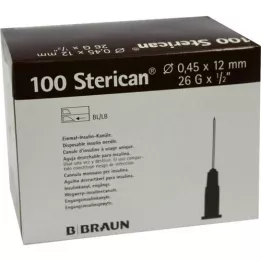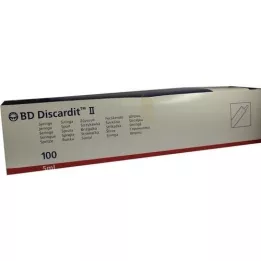-15% 

Ultrajekt Intraligamental Syringe, 1 pcs
ULTRAJEKT Intraligamental Spritze
Manufacturers: Sanofi-Aventis Deutschland GmbH
PZN: 04347309
Dosage: Spritzen
Content: 1 St
Availability: Out of stock
$319.61
$271.35
from German pharmacies to your address
-15% 

Instructions for use for Ultrajekt Intraligamental Syringe, 1 pcs
Instructions for use for: Ultrajekt Intraligamental Syringe, 1 pcs
Ultraject Intraligamental Syringe
Instructions for use UltraJect. The injection syringe with compressive force limitation for the intraligamentary anesthesia
Two instructions for handling:
- The dosing lever must be pulled through at each application to the stop.
- The needle should be left in situ for a few seconds with a pulled dosing lever.
The injection syringe with compressive force limitation for the intraligamentary anesthesia:
UltraJECT is an intraligigamental syringe with automatic compressive force limitation, which ensures that a force of approx. 100 Newton is not exceeded in the application. This means that the pressure required to inject the local anesthetic is generally achieved, but critical pressures are avoided. (As investigations show, in an intraligamentary anesthesia with syringes without compressive force limiting, pressure forces of over 300 Newton can occur. This can lead to local tissue damage. The bursting of cylinder ampoules can not be ruled out.) The power application below the predetermined maximum value remains controllable via the trigger lever. UltraJECT is the intraligamental syringe with the additional safety factor.
You will find details about:
- The UltraJECT injection syringe
- Procedure for intraligamentary anesthesia
- Notes on intraligamentary anesthesia
The UltraJECT injection syringe:
- 1 Pawl for locking the piston rod. By depression, the lock is released.
- 2 Piston rod
- 3 Screw-on ampouline holder
- 4 Plastic protective tubes for insertion into the ampoule holder
- 5 Tripping lever
- 6 Handle with the mechanism of compressive force limitation
Preparation of the Ultraject:
In the blasted ampouline holder, the protective tube and a cylinder ampoubles are inserted. As soon as the piston rod (with depressed pawl) is pulled back from the syringe body to the stop, the ampoule holder can be screwed onto the syringe with protective tubes. A thin cannula is placed and screwed. To check the correct functioning of the system, a drop of anesthesia solution can be sprayed out. (Only slightly press tripping lever!)
Choice of cannula:
For the intraligamentary anesthesia, thin needles are needed. Suitable injection needles with 0.3 mm diameter (30 g) and an interior, d. H. To the cover plate of the cylinder ampoult directed needle supernatant of 13 mm. These commercially available cannulas fit on all common syringes.
Anesthesia solution:
Anesthesia solutions with a low adrenaline addition of 1: 200,000 or 1: 100,000 (eg ultracain D-S / Ultracain D-S Forte).
Cleaning and sterilization:
Before each sterilization, the syringe should be thoroughly cleaned so that damaging deposits can not be determined. For the pre-cleaning, the disinfection and cleaning agent are common in the dental practice for instruments (eg ID213 Dürr liquid). To eliminate deposits, it is recommended to clean the splash of the splash either in the ultrasonic bath or to boil for 20 to 30 minutes.
Machine cleaning:
The effectiveness of the cleaning was with a cleaning / Disinfection machine Miele G 7735 CD detected using the following program: Vario TD program (without disinfection step):
- 4 min pre-washed with cold water
- Emptying
- 5 min wash at 55 ° C with 0.5% neodic Mediclean, Dr. Welgert (Hamburg)
- Emptying
- 3 min Neutralization with warm tap water (> 40 ° C)
- Emptying
- 2 min intermediate rinse with warm tap water (>40 ° C)
- Emptying
All parts of the syringe can be in the autoclave under conditions of steam sterilization at 121 ° C for at least 20 minutes or at 134 ° C are sterilized for at least 3 minutes.
Prophylaxis:
For reasons of infection prophylaxis, the content of a cylinder ampouular may only be used in a patient. The unnecessary rest of the anesthesia solution must be discarded!
Procedure in the intraligamentary anesthesia:
1 sulkus hygiene:
Before an intraligamentary anesthesia, the gingival sulkus is to be cleaned and disinfecting with a usual antiseptic. This should be done immediately before the injection, as the germ count rapidly grows again. An intraligamentary anesthesia may only be carried out with plaque-free sulkus.
2 injection site:
Basically, in the entire area of the periodontal gap can be injected. In Praxi, however, the mesiale and the distal application is preferable as these sites are easily accessible and enable a secure guidance of the injection cannula. Depending on the situation, the cannula can be bent.
3 Procedure in the injection:
In general, as follows:
The needle tip is inserted perpendicular to the tooth perpendicular to the periodontal gap and subdifts some drop anesthesia solution approx. 1 mm to 2 mm deep into the ligamentum circulare up to the level of the Limbus alveolaris. The correct position of the needle is achieved when a clear resistance is perceived during the gentle operation of the trigger lever. If a clear resistance is not noticeable, the needle is still a little deeper towards the tooth root or to change the puncture location. An injection without pressure application against significant resistance remains ineffective or inadequate, as the local anesthetic escapes from the gingival sulkus or in the surrounding tissue.
4 infiltrate slowly!
The injection of the anesthetic solution should be done slowly and with uniform pressure application. With the Ultraject syringe, however, a forced injection is not possible even when the trigger lever is pressed for too fast, since the mechanism of the syringe limits the injection force and the anesthetic solution is slowly released and uniform pressure in the periodontal gap. The slow injection of 0.2 ml solution (which corresponds approximately one gear of the trigger lever one requires a time of about 20 to 30 seconds. The anesthesia effect occurs virtually immediately, so that the treatment can be started immediately after injection.
5 Dosage:
For the anesthesia of a rooted tooth for preserving or prosthetic treatment, the unique injection of 0.2 ml of anesthesia solution is usually sufficient. To extract a rooted tooth, two injections of 0.1 to 0.2 ml of solution each are required at two opposite places (eg, mesial vestibular and distal-oral). For preserving and prosthetic treatment multi-rooted teeth, injection to 0.2 ml solution is required per root (mesial and distal, in the upper jaw also palatal). For extraction multi-rooted teeth in the lower jaw, a total of four injections to 0.1 to 0.2 ml solution required (each mesial vestibular, distal vestibular; Distal oral and mesial oral). For extraction multi-rooted teeth in the upper jaw is as in the preserving and prosthetic treatment.
Notes on intraligamentary anesthesia:
Areas of application: The intraligamentary anesthesia proves itself
- to local anesthesia of single teeth in the upper and lower jaw,
- in child practice,
- treatment in several quadrants during a session.
From anxious patients, the intraligamentary anesthesia is usually accepted rather than a conventional local anesthesia with the dreaded "puncture pain". For problem patients, the low consumption of anesthesia solution is pharmacologically favorable. For patients with hemorrhagic diathesis, intraligamentary anesthesia is beneficial. In particular, hemophilia patients can not be unproblematicavoid ilhematomas. In the case of intraligamentous anesthesia in the lower jaw, the anesthesia of tongue and lower lip felt at the lead anesthesia and the patient punishable from the patient is eliminated. Due to the limited anesthesia propagation, intraligigamental anesthesia is suitable for diagnosis in unclear pulpitical complaints that are not uniquely localized with other methods. A test injection at the tooth in question should be done in the buccal, but by no means in the interdental area to exclude anesthetic of the neighboring tooth.
Contraindications:
An intraligamentary anesthesia should not be performed:
- in case of litigation periodontal gap (needle not lead by inflamed area!)
- for extended periodontal gap (the pressure required for this application technique can not be established).
Patients who are endocarditis-endangered should not receive intraligamentary local anesthesia because of the risk of bacteremia. This also applies if prophylactically an antibiotic is administered.
Side effects:
Needle dreams in the DESMODONTAL FASTER APPLEATLE HELLING FOR SNOW INJUSTION PRIVALLY ONLY ONLY ONLY FOLLOW within a week. From a repeated injection into the same periodontal area is advised. The puncture in the anterior area is not always completely painless. After intraligamentary anesthesia, disaggestions, elongation or bite sensitivity of the anesthetized tooth can occur, which can last until the following day. In correct technology, these phenomena are very low after number and kind. The pressure limitation reduces the possibility of tissue damage. For UltraJECT there is an accessory pack with an ampoule holder and two protective tubes.
Manufacturer:
Henke-Sass, Wolf GmbH
Keltenstrasse 1
78532 Tuttlingen
www.henkesasswolf.de
[email protected]
Made in Germany
Status of information: April 2014
Source: www. sanofi. de
Status: 01/2015
Medicines Reviews
There are no reviews for this product.
Write a review
Related Products
Popular in Spray & cannulas
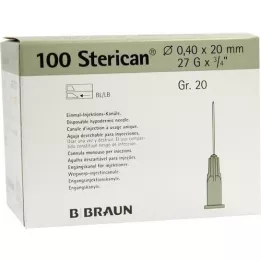
STERICAN Luer-Lok cannula 0.40x20 mm size 20 gray, 100 pcs
STERICAN Kanülen Luer-Lok 0,40x20 mm Gr.20 grau
$7.53
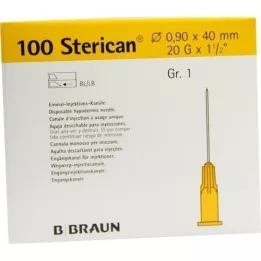
STERICAN cannulas Luer-Lok 0.90x40 mm gr.1 yellow, 100 pcs
STERICAN Kanülen Luer-Lok 0,90x40 mm Gr.1 gelb
$6.86
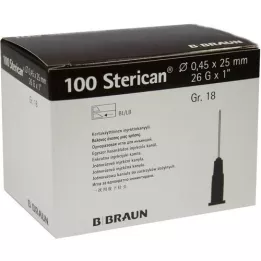
STERICAN cannulas Luer-Lok 0.45x25 mm gr.18 brown, 100 pcs
STERICAN Kanülen Luer-Lok 0,45x25 mm Gr.18 braun
$7.53
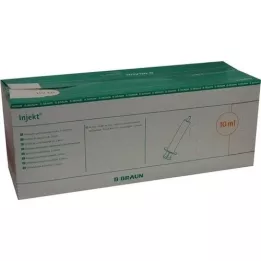
INJEKT Solo syringe 10 ml luer eccentric PVC-fr., 100x10 ml
INJEKT Solo Spritze 10 ml Luer exzentrisch PVC-fr.
$15.32
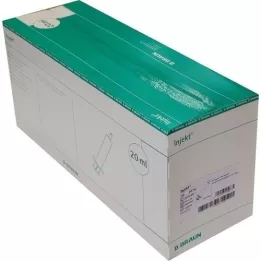
INJEKT Solo syringe 20 ml luer eccentric PVC-fr., 100x20 ml
INJEKT Solo Spritze 20 ml Luer exzentrisch PVC-fr.
$22.65


